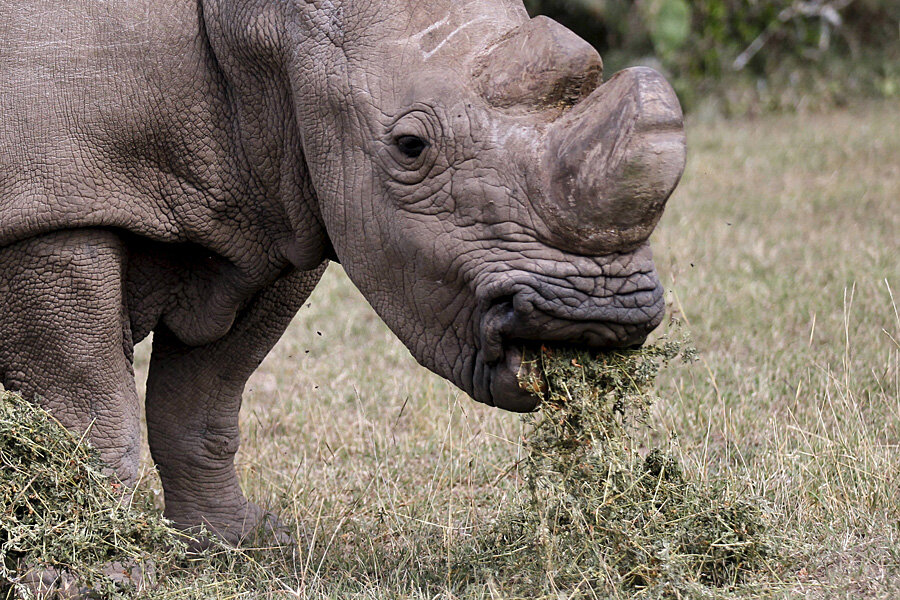Can 3D-printed rhino horns slow down the poaching industry?
Loading...
A number of different approaches have been taken to attempt to solve the problem of poaching, from military protection to emotional pleas. Now Pembient, a biotech company originally based in Seattle, is taking a new approach to stop poaching by making 3D-printed horns. The company plans to flood the market with horns a fraction of the price of real horns, forcing poachers out.
Pembient is planning to “[leverage] advances in biotechnology to fabricate wildlife products, such as rhino horn and elephant ivory, at prices below the levels that induce poaching” the company website announced. The company uses keratin and rhino DNA to create a dried powder substance that is then put into a 3D printer in order to create the horns.
"We're like the universal cutting agent," Pembient CEO Matthew Markus told Fast Company. "In the drug trade, usually a cutting agent is something that's cheaper and inferior to the product being cut. But if we can offer something as good as the product being cut but vastly cheaper, then anyone in the trade will naturally gravitate to using our product."
A report released by Traffic, a wildlife trade monitoring network, shows that in 2013, the number of seizures of illegal ivory decreased dramatically, but the overall weight seized increased dramatically, making the ivory industry “the third most valuable illicit commerce behind drugs and arms,” according to the Traffic report. In some countries, the ivory is worth $65,000 per kilogram ($143,000 per pound).
Extreme measures have been taken to protect some of the rhino species that are on the brink of imminent extinction. The last male white rhinoceros, Sudan, has an armed security detail and has had part of his horn removed in order to further deter poachers. While black rhinos are the most populous of the rhino species, currently there are only an estimated 4,848 left in the world today.
Rhinoceros horn is used primary across Asia and Africa for a variety of traditional medicines. Vietnam, along with China, is now a driver of demand for rhino horn. Concerns have been raised that flooding the market will increase the demand for the real horns, if it turns out they can be distinguished from the 3D-printed variety.
While other industries such as the synthetic diamond market, and the synthetic leather industry have arisen partially due to ethical concerns with the practices in those industries, this attempt by Pembient presents a new scenario: a direct attempt to undercut an illegal industry by providing an indistinguishable substitute.
Conservation groups, including Traffic, have launched campaigns in southeast Asia informing the public that rhino horns are made of keratin, the same protein that is in human fingernails, toenails, and hair. The groups took a market-based approach, seeking to reduce consumer desirability, in order to decrease the illegal trade. However, the advocates have cautioned that demand reduction alone wouldn’t stop the illegal trade altogether.








